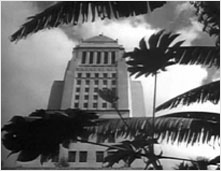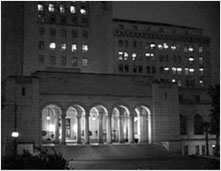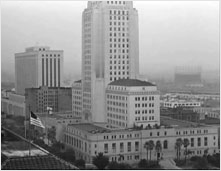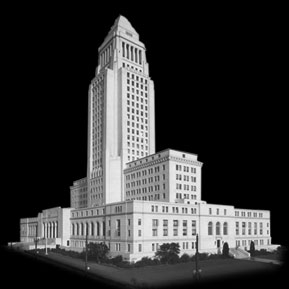
The Los Angeles City Hall remains one of the most recognizable buildings in America. Built in 1927 it remained the tallest structure in the city for more than 30 years, so it became an icon of Los Angeles somewhat by default. The other factor contributing to its status was its use it films and later television. Any boomer weaned on early television certainly remembers how the City Hall was featured prominently at the beginning of each Superman show. But today anyone watching noir and not familiar with the history of the building may wonder why it’s featured in so many films. What’s forgotten is that up until 1955 the headquarters of the Los Angeles Police Department. was located within City Hall.
Over time it became almost a film standard for directors to use a City Hall cutaway to indicate police headquarters when they wanted to show where the action was taking place. The City Hall served that purpose, but having no obvious signs to identify with the LAPD meant most directors must have assumed that viewers would make the connection. In 1955 the LAPD moved into their new headquarters a block from City Hall. There was nothing architecturally unique about the new LAPD headquarters but it did have signage which you could expect to see in every cutaway. This building would named Parker Center in 1966 in honor of long serving Police Chief William H. Parker. The bland box that is Parker Center has achieved its own fame during the ensuing 50 years given its prominence with Hollywood. But it is the City Hall where film history lives, especially when it comes to film noir.


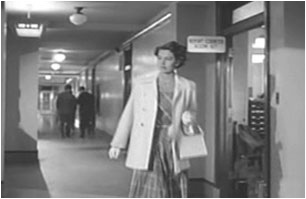
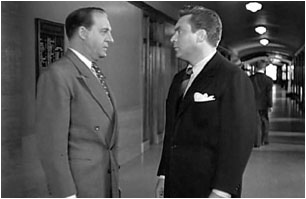

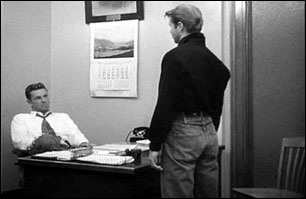


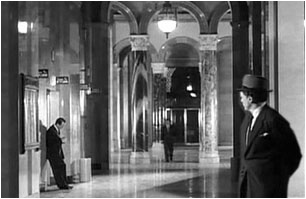
Even in 1958 as freeways started to flourish, the City Hall still dominated the Los Angeles skyline.
This scene form 1954’s Crime Wave shows the entrance to LAPD headquarters within the City Hall.
O’Brien and Howard St. John n 711 Ocean Drive , also in 1950.
Edward G. Robinson enters city hall in 1955’s Tight Spot. The film was set in New York City but the City Hall was used for a N.Y federal building.
Cyd Charisse strolls the LAPD hallway in Tension,
1949.
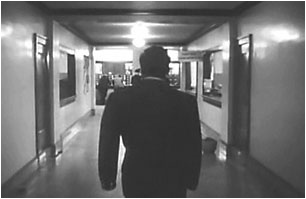
Who needs a set or sound stage. Access to shoot inside LAPD offices added realism to noirs and also allowed for smaller budgets. Director Andre De Toth used the LAPD offices extensively in Crime Wave as seen with Sterling Hayden. At left Hayden interrogates Gene Nelson and gives orders at right.
Edmond O’Brien walks to the LAPD desk inside City Hall in 1950’s D.O.A. This is one of two films he made that year using the City Hall interior.
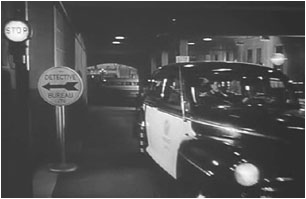
The real deal, replete with clipboards, wanted posters and water cooler in LAPD office used in 1951’s Vice Squad, with Edward G. Robinson.
The LAPD garage beneath City Hall also played prominently in many films as in this scene from He Walked By Night in 1949.

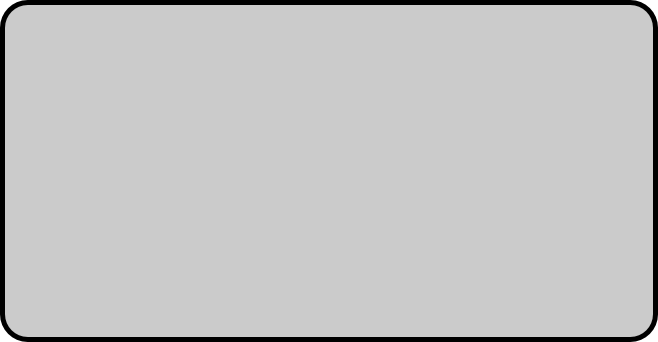


Sterling Hayden and Barbara Stanwyck drive into the underground garage at the new LAPD headquarters in 1956’s Crime of Passion with City Hall in the background. Notice the prominent sign to their right identifying the building. This was the first film to shoot in the new headquarters -
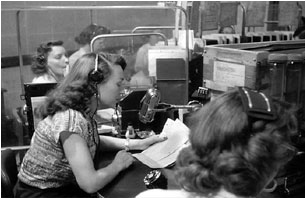

Van Johnson and John McIntire at the police desk in 1949’s Scene Of The Crime.
The radio room in City Hall was also used numerous times like this scene from Crime Wave. These were real dispatchers and not actors.
Here are sequences from four films that used the City Hall as a backdrop representing police headquarters. From left: The Unfaithful, 1947; White Heat, 1949; 711 Ocean Drive, 1950 and Crime Wave, 1954 where even at night the building is very distinguishable.
